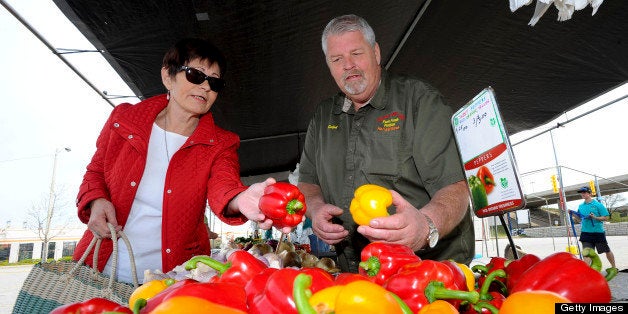
My in-laws were raised in the South where they had access to fresh produce that they grew alongside their parents. They knew what good, wholesome food was and they established healthy eating habits for their kids -- my husband and his brother -- even in Brooklyn, N.Y., where they resided for 46 years.
My husband's family is likely the exception. For many kids growing up in the inner city, chances are tomatoes, green beans and peaches that haven't come out of a can are hard to come by. In far too many urban areas, eating healthy is not just a luxury -- it's next to impossible.
Consider this: More than two million American families live more than a mile from the nearest supermarket, and do not have access to a vehicle. Low-income neighborhoods have roughly half as many supermarkets as wealthy neighborhoods. Meanwhile, only 8 percent of African Americans live in an area with a supermarket nearby, compared with 31 percent of whites.
It's not just that it's harder for low-income and people of color to get to a supermarket with fresh produce. It's also that there is a proliferation of convenience stores in these areas -- stores that offer mostly preservative-laden, high-fat, high-sugar foods that contribute to health problems like obesity and diabetes.
Is it any wonder, then, that urban, low-income communities are most vulnerable to these problems? In Canada, for example, If you earn less than $15,000 a year, you are twice as likely to develop Type 2 diabetes. And your risk of life-threatening obesity is much greater if you are African American (26 percent) or Latino (21 percent).
One of the best ways we can combat obesity, diabetes, and other conditions caused by poor nutrition is simply by improving access to healthy foods. A growing number of our leaders in Congress are working to do just that. Representative Marcia Fudge's "Let's Grow Act" would expand access to healthy and affordable local produce, in part by incentivizing and expanding the use of SNAP (Supplemental Nutritional Assistance Program) benefits to purchase vegetables and fruits at farmer's markets. It would connect farmers with preschool programs, ensuring that small children have a chance at a healthy meal.
In addition to combating hunger and obesity among children, seniors, and low-income communities, the Act would also improve water quality in cities and encourage food production on vacant land. The legislation also includes the Healthy Food Financing Initiative, which provides "loans and grants to eligible healthy food retailers to overcome the higher costs and initial barriers to entry in underserved, urban, suburban, and rural areas."
Meanwhile, another bill, the Local Food, Farms, and Jobs Act of 2013, sponsored by Representative Chellie Pingree and Senator Sherrod Brown, would encourage sustainable agriculture and tap into the tremendous opportunity created by the growth of local food markets. Today, there are almost 8,000 farmers' markets throughout the United States. And according to the Department of Agriculture, local food sales now account for $5 billion annually. These markets represent an important new source of green jobs and businesses.
The Local Food, Farms, and Jobs Act would expand opportunities for local farmers and ranchers by connecting them to more consumers, both through expanded SNAP benefits and through creative solutions, like giving school districts a choice to purchase lunch foods from local and regional producers. At the same time, these programs give more Americans -- especially kids and seniors who are living in poverty -- access to healthy food.
Today, low-income Americans are being squeezed harder than ever. We're seeing unprecedented cuts to SNAP and other programs that promote health and create opportunities for local, minority farmers. Faced with these devastating cuts, legislation like this is critical.
As both the House and Senate debate their respective versions of the Farm Bill this week, Senator Brown, Representatives Fudge and Pingree, and other leaders are fighting hard to make sure it includes key pieces of these bills, and to ensure that access to healthy foods is not a luxury reserved for a few. They need your help. Please contact your representatives and ask them to support these healthy food provisions. For more information, click here.